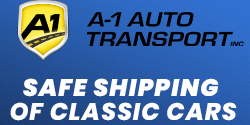- Local time
- 12:05 PM
- Joined
- Mar 14, 2012
- Messages
- 18,329
- Reaction score
- 33,247
- Location
- Surrey, B.C. Canada
It's used not just for tie replacement, but to lift and level. Those four gray/silver vertical arms near the center of the machine in the photo that Coronet-Arch posted are used to thrust into the ballast on either side of a tie, then they angle inward on all sides, compressing the ballast directly under the tie to alleviate soft spots and firm up support. I saw them in operation all the time. They work like this:Now that you mention it, I think I've seen one myself. Doesn't it pinch the rails and lift, push out the old and push in the new ones?
Ties go by different names; here we call them a railway tie, in England or Australia they're known as a sleeper.
By the way, there are also different types of ballast with different appearances. Usually it's crushed rock, very angular in shape, and usually granite or limestone, selected for their durability and resistance to being crushed and weathered. Often, a layer of ballast is all that's used in light duty sidings or secondary routes, while main lines are more robust, with a base layer of sub ballast which can include crushed concrete and sand, and an upper layer of regular crush. Top layers are generally graded between 25-60mm, or 1" to 2 1/2" in size and provide a good anchor to prevent rail movement, especially needed on curves. Main line ballast is often laid to a depth of half a meter or 20 inches.
Gravel is sometimes used, but due to being rounder, it is less effective at providing a good anchor and can shift around, so isn't normally seen on a main line track. It does provide good drainage though, something needed for all types of ballast and will work for sidings or light use areas but should still be a minimum of 150mm or six inches deep.
In areas close to a mill, crushed slag is as good as crushed rock and may be more economical.
Those concrete ties aren't foolproof either. Originally praised for their resistance to rot compared to wood, time has shown that they can be subject to wear from rubbing on the ballast, causing them to get thinner. Much work and research has been ongoing to develop harder types of concrete for this use, including the inclusion of steel fibers, fumed silica, fly ash and other materials. It's an ongoing science.

















